Planning your own trip? Prepare for your trip
Use Rough Guides' trusted partners for great rates
- Portugal
- Aveiro
Plan and book your private, tailor-made tour with vetted local experts
Aveiro sits just south of Porto, on the edge of a lagoon system that stretches around 40 kilometers in both directions. It was once a thriving coastal port, but everything changed in the mid-1500s when the river mouth silted up. Cut off from the sea, the area turned into a swamp, and the local economy collapsed.
In the early nineteenth century, a series of canals brought Aveiro back to life. The waterways drained the marshes, reopened trade routes, and created saltpans that still sparkle in the sun. Seaweed harvesting also helped fuel a slow revival.
These days, tourism is what drives Aveiro. Visitors come for boat rides on the canals, for the curvy Art Nouveau architecture, and for the nearby Vista Alegre factory where Portugal’s most iconic ceramics are still made.
Beaches are just across the water. Barra has a busy summer scene, while Costa Nova is known for its bold striped houses and fresh seafood. If you want something quieter, head north to the São Jacinto nature reserve. You'll find dune trails, boardwalks, and a stretch of coast that feels far wilder than it is.

Tips from Joel
Portugal Travel Expert

Hey, I’m Joel, your Portugal travel expert. I’ve spent years researching this country, and Aveiro stands out for its mix of canals, coastal charm, and offbeat details. Set just south of Porto, the city feels different from anywhere else in Portugal. Moliceiro boats cruise the waterways, salt pans shimmer on the edge of town, and tiled Art Nouveau buildings line the streets.
This Aveiro travel guide covers the essentials: how to get here, what not to miss, and where to stay if you want to make the most of your time. It’s an easy place to explore on foot or by boat. Stop for coffee by the canal, walk the lagoon trail, or take the short ride out to Costa Nova for seafood and an Atlantic breeze.
Joel’s tip
Skip the busiest hours and take a moliceiro boat later in the afternoon. You’ll avoid the queues and catch better light for photos.
Best time to visit
April to June and September to October are ideal. Days are warm and dry, and the city feels more relaxed outside the summer rush. July and August are fine for beach time, though crowds build up around Barra and Costa Nova. Winter is cooler and quieter, with most places still open.
How to get to Aveiro
Trains run frequently from both Lisbon and Porto, making Aveiro an easy stop without a car. From Porto, the journey takes about an hour. From Lisbon, it’s around two and a half. The station is a short walk or quick taxi ride from the historic center. If you’re driving, there’s parking near the salt museum and the canal area.
Best areas to stay in Aveiro
Aveiro is in central Portugal, on the country’s west coast, just south of Porto. It sits along the Ria de Aveiro, a shallow coastal lagoon that winds inland from the Atlantic. The city is around 75 km from Porto and about two and a half hours by car or train from Lisbon.
Thanks to its mix of canals, beaches, and bold architecture, Aveiro regularly features on lists of the best places to visit in Portugal. It’s a convenient stop between Porto and Coimbra, with enough to fill a relaxed day or two. From here, you can explore the striped houses of Costa Nova, walk the trails in the São Jacinto Dunes Nature Reserve, or take a detour inland to historic towns like Águeda or Mealhada.


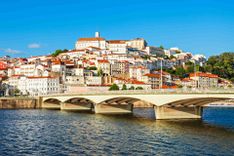
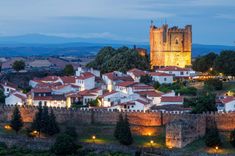

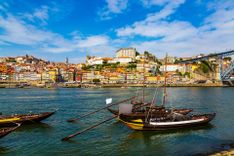










Aveiro is compact, flat, and easy to explore on foot or by bike. The city center is walkable, and most of the sights: canals, museums, markets, and tiled facades, are within a short distance of each other. There’s no need for a car in town, but if you're heading to the beaches or nearby villages, having your own wheels helps.

Aveiro, Portugal @ Shutterstock
If you're wondering how many days in Aveiro are enough, one full day covers the basics: a canal boat ride, a walk through the Art Nouveau district, a visit to the salt museum, and time to try ovos moles at a bakery near the water. But with an extra day, the trip gets better.
Stay overnight and you’ll see the city slow down. The tour groups vanish, the canals reflect the evening light, and the restaurants around the fish market fill with locals. It’s also worth spending a second day exploring beyond the center. Head to Costa Nova to see the striped houses and walk along the boardwalk, or take the ferry to the São Jacinto Dunes Nature Reserve for wide beaches and quiet trails.
If you're planning a 10-day Portugal itinerary through the central or northern regions, two days in Aveiro make a solid stop. It gives you time to enjoy both the city and the coast, with enough breathing room to avoid turning it into a checklist.
Aveiro has a good mix of small hotels, guesthouses, and short-term rentals, most within walking distance of the canals and central sights. Here’s where to stay depending on your travel style.

Moliceiro boats mooring alongside the central channel at Aveiro, Portugal
Aveiro blends canals, salt history, modern design, and Atlantic beaches into one easygoing, walkable city. It’s not about racing through attractions; it’s about wandering slowly, tasting boldly, and heading where the tide or the bike lane takes you. Here’s an in-depth list of things to do in Aveiro, each one offering a reason to stick around a little longer.
Aveiro’s canals were once used to haul seaweed, but today they’re a scenic introduction to the city. Hop on a moliceiro, one of the brightly painted boats lined up along the central quay. The prows are cheeky, painted with everything from religious scenes to risqué cartoons, and the ride takes you through the city’s most photogenic corners.
You'll pass under low bridges, past tiled townhouses and warehouses once tied to the salt trade. Boat guides often point out key buildings, but even without commentary, it’s a fun way to see the city from a different perspective. Go early or late in the day to avoid the crowds and catch better light. It’s touristy, but worth it, especially on your first visit.
Just outside the main station, Aveiro’s original terminal is covered in azulejos, Portugal’s iconic blue-and-white ceramic tiles. These aren’t just decorative. The scenes tell stories of everyday life: salt workers bent over the pans, fishermen in flat-bottomed boats, and women in wide skirts carrying baskets of seaweed.
Built in the early 20th century, the station has been preserved as a piece of public art. It’s small, free to visit, and usually quiet. If you’re interested in Portuguese tilework but don’t have time to tour Lisbon’s museums, this is a strong and easy alternative.
Salt has shaped Aveiro’s past and still trickles into its present. Just outside the city, the Troncalhada Ecomuseum sits beside active saltpans where workers still rake crystals from shallow evaporation pools. Inside, you’ll find a small exhibition that covers traditional salt-making methods, tools, and the environmental role of the lagoon.
But the best part is outdoors. A wooden path loops around the saltpans, with calm views and the occasional stork gliding overhead. Go late in the day for golden light across the water. It’s an unexpected pocket of quiet, and proof that Aveiro is more than just boats and beach houses.
Aveiro’s Art Nouveau quarter may be small, but it’s packed with personality. You’ll spot curved iron balconies, tiled façades, stained glass windows, and door knockers shaped like sea creatures. The best way to see it is on foot, starting at the Art Nouveau Museum, housed in the pastel-pink Casa Major Pessoa.
Even if you skip the museum interior, take time to explore Rua João Mendonça and the surrounding streets. Many buildings were commissioned by wealthy merchants in the early 1900s, and the details: floral ironwork, painted tiles, sculpted stone, still feel indulgent. It’s not a formal district, but you’ll know it when you’re in it.
Ovos moles aren’t subtle. These small sweets are made of egg yolks and sugar, wrapped in rice paper, and often shaped like shells or fish. The recipe comes from local convents, where nuns were known for turning leftover yolks into edible indulgence. Today, they’re Aveiro’s most famous bite.
Start at Confeitaria Peixinho, a century-old bakery just off the main canal. You’ll find ovos moles boxed like gifts, sold individually, or folded into pastries. Locals love them, visitors are split, but tasting one is practically a rite of passage. If you're building a food-focused Portugal itinerary, this is a must-eat moment.
In nearby Ílhavo, the Vista Alegre porcelain factory has been producing high-end ceramics since the 1820s. You can tour the museum to see historic pieces, learn about porcelain production, and walk through a wing filled with royal commissions and intricate painted sets. It’s polished, but not dull, and there’s an outlet shop next door with solid discounts on factory seconds.
The visit pairs well with lunch at a seafood spot in Ílhavo, which is known for caldeirada (fish stew) and bacalhau dishes. Allow at least half a day. If you’re into design, craft, or even just good souvenirs, this is a smart detour from the city center.
Costa Nova is where Aveiro swaps canals for the coast. This seaside village is famous for its candy-striped houses, once simple fishing huts, now reimagined as summer homes. The look is cheerful, photogenic, and surprisingly low-key once you move beyond the Instagram shot.
The main strip runs between the lagoon and the Atlantic, with wooden boardwalks, seafood restaurants, and small markets. Try grilled sardines or linguado grelhado (grilled sole), and linger by the dunes with a coffee or a cold beer. If you're searching for the best beaches in Portugal, Costa Nova makes a strong case, not for size or surf, but for charm, accessibility, and flavor.
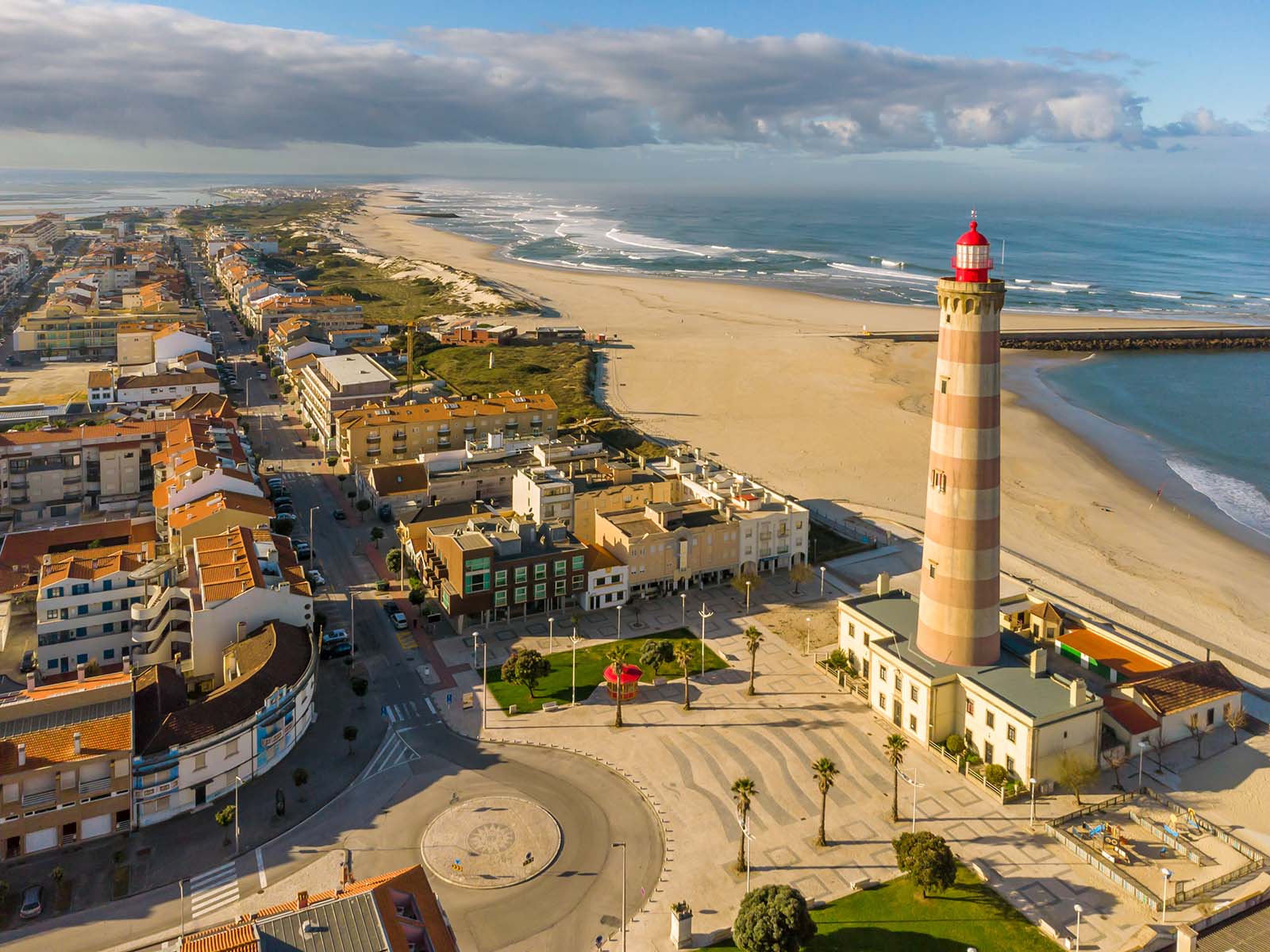
Lighthouse from Barra beach in Ílhavo, Portugal © Shutterstock
Just south of Costa Nova, Praia da Barra is home to Portugal’s tallest lighthouse. Standing 62 meters high, the Farol da Barra has guarded this coastline since 1893 and is still active today. On select days, you can climb the 271 steps to the top for a sweeping view of sea, sand, and saltpans.
Even if the tower is closed, Barra’s long beach and open boardwalk make it a good spot for a lazy afternoon. You’ll find surf schools, casual cafés, and a long curve of sand that feels a world away from the tiled streets of Aveiro.
For a slower pace and fewer people, make your way to the São Jacinto Dunes Nature Reserve. It protects a stretch of undeveloped coastline, with pine forest, shifting dunes, and marshland. Trails are well marked, with wooden walkways keeping you above the sand in the most fragile areas.
Birdwatchers come here for spoonbills, herons, and marsh harriers, but even casual walkers will enjoy the peace and space. There’s no café or shop inside the reserve, so bring water and something to eat. The ferry from Aveiro makes this feel like a proper escape, even though it’s less than an hour from the city.
If you’ve already explored the canals and coast, consider hopping on a train to Coimbra, just under an hour away. It’s one of Portugal’s oldest cities and home to the University of Coimbra, a UNESCO World Heritage Site. Don’t miss the Joanina Library, the medieval cathedral, and the steep, cobbled alleys of the old town.
This trip adds a dose of history and architecture to your Aveiro stay and rounds out your list of things to do in Portugal beyond the coast. You can visit as a half-day trip, but give it a full day if you want time for museums, river views, and a long lunch.
Aveiro has a mild Atlantic climate with cool winters, warm summers, and plenty of sea breeze. Its position on the coast means smaller temperature swings than inland towns like Coimbra or Monsanto, and the nearby Ria de Aveiro keeps things humid year-round. Rain is more common from November to March, but sunny days are frequent even in winter. Average temperatures range from around 48°F (9°C) in January to 77°F (25°C) in August, though it can feel warmer inland and cooler along the beaches. For many travelers, spring and early autumn make this one of the best time to visit Portugal, especially if you’re looking to explore cities like Aveiro without the high-season rush. For updated forecasts, check IPMA (Portuguese Institute for Sea and Atmosphere).
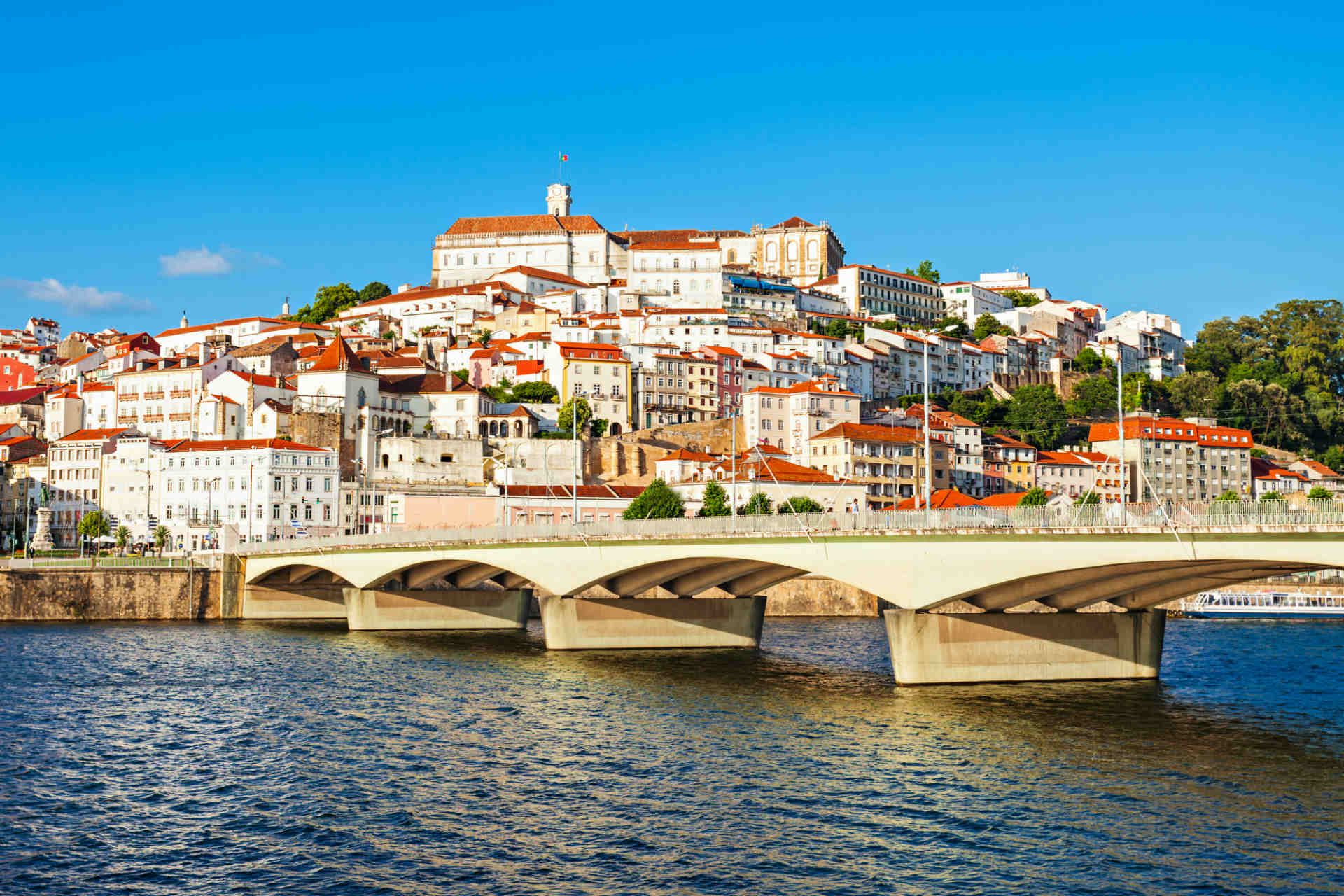
Coimbra, Portugal © saiko3p/Shutterstock
Aveiro’s food scene blends coastal tradition with a few creative twists. You’ll find everything from seafood stews and grilled fish to eggy desserts that spark debate. The best meals tend to come from family-run tascas or unfussy restaurants near the canal, the kind of places where menus are handwritten and the vinho verde is poured without asking.
Expect local ingredients, strong flavors, and lots of fish. Cod, eel, and shellfish are staples here, often cooked in clay pots or served over rice. Sweets lean heavily on egg yolks and convent recipes. For something fancier, a few modern kitchens around the city are raising the bar, but you don’t need to spend much to eat well.
Here are some unique experiences we can arrange for your tailor-made Aveiro trip: all private, flexible, and designed by our local travel experts.
Discover Portugal's most captivating stories
Use Rough Guides' trusted partners for great rates
written by
Olga Sitnitsa
Online editor at Rough Guides, specialising in travel content. Passionate about creating compelling stories and inspiring others to explore the world.